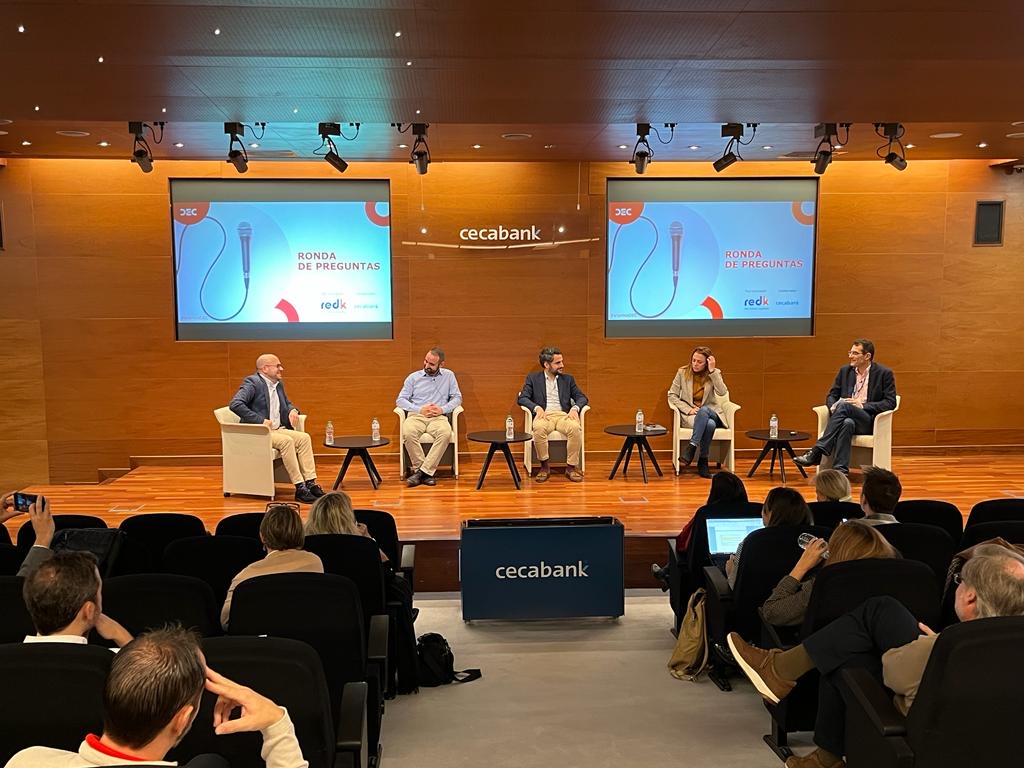
On 17 November, at the head office of Cecabank, a Friday DEC was held, sponsored by redk and in collaboration with Cecabank. Under the title "How to maximise the Customer Experience in B2B environments", attendees were given an insight into the latest innovations and trends in Customer Experience in the aforementioned environments, which are radically transforming the way companies approach efficiency, customisation and decision-making. To this end, the event featured the participation of experts such as Sandra García, Director of Arpada Servicios; Ramón Rull, Head of Customer Experience at Port de Barcelona; Kiko Conde, Director of Alternative Financing at Urbanitae; and Miguel Magán, General Manager of redk España, who were moderated by Íñigo Belderráin García, Head of Quality at Cecabank.
Íñigo Belderráin García welcomed the attendees and, by way of introduction, commented that "when we were asked to hold a conference on Customer Experience at our offices, it was clear to us that we had to focus on the B2B environment".
Sandra García gave a brief introduction on Arpada, a construction company, where she explained the growth it has achieved. Her company aims to provide the best customer experience throughout the entire process, from the start of the project until the house is delivered. It has focused on putting the spotlight on the customer in order to understand their expectations and pain points, and the conclusion it has reached is that the end user must be taken care of, so much so that the project differentiates between professional customers and users. These two have different needs, management methods and interests. For these reasons, the development of strategies must be based on services that address the needs of each user, which is why it is particularly important to have a good structure and a team capable of generating trust.
It has different levels within the organisation. Arpada idea, which represents the customisation aspect, while in Arpada product quality and customer service, the aim is to optimise services and obtain better results. One of these actions involves visiting all customers, which has produced very satisfactory results because it has reduced incidents and the time it takes to resolve them. Another area is Arpada 10, in which it has developed new services focusing on building management and putting the tenant at the core, thereby keeping the infrastructure in the best conditions and aiming for a long and lasting stay of the user. Finally, she explained the activity of Arpada living, in which it feels that what is most important is to offer people the best service, to ensure a complete experience.
The lessons learned during processes should be based on the need to define the different areas, to determine each case with pinpoint accuracy based on usage. In this sense, customisation of service and reporting, according to the customer, should be a fundamental pillar, offering many opportunities for improvement. "We look forward to taking on many more challenges in the construction sector. Our motto is: Building is more than building".
Ramón Rull, "I am excited because I am entering an unknown terrain for me, as is Customer Experience". The port of Barcelona is the largest logistics operator, with more than 1,125 hectares, an area in which more than 500 companies conduct their commercial activity, employing some 30,000 people. The aim of this ecosystem is to strive to ensure that international trade operates with guarantees.
In order to improve processes, it conducts regular surveys to get feedback from users. Once opinions have been defined, it focuses on qualitative processes to improve Customer Experience. In analysing the processes, it has realised that within society there is increasing uncertainty, so there is a demand for more user support, more proximity, more analysis and the improvement of the different channels.
To address this, it has developed a range of free tools of all kinds: Port links, to design logistics chain models; Eco-calculators, to calculate carbon emissions; Vessel Port Calls, to consult the schedule of port calls; Portic, which is the only payment method, and is used for the interconnection of ports and users in the community; and Access Time Port Terminals, the function of which is to provide real-time information on access to terminals.
It also offers an on-line customer service with which, at the click of a button, customers have access to all the information, which allows them to improve their decision-making. As a result, the Port has understood that it must be present throughout all stages of the operator's journey so that the latter feels cared for and supported, thus benefiting their experience.
In the quality department it measures the degree of satisfaction of the operator's logistical needs. In addition, it has a tool to map the relationships between suppliers and logistics operators, so it can create a ranking of the best supplier logistics chains. Its mapping of the journey is built on appeal, orientation, interaction and retention. But most important of all is the development of a common and shared CRM.
It is also periodically assessing service satisfaction to discover whether users would recommend Port de Barcelona to other companies similar to their own, as well as to find out how they would define it. These evaluations showed an increase in NPS in recent years, "what we have realised is that people are no longer satisfied with you doing it right, but rather you have to be the best". It also has a customer effort indicator that measures the quality of service offered and an indicator of the overall level of satisfaction with the service.
He concluded with the lessons learnt, highlighting the following: improve service quality measurement objectives, know how to detect the root cause of complaints and be able to address them as unique, optimise the coordination of commercial actions and thoroughly analyse the functions demanded from the CRM.
During Kiko Conde's intervention, he gave an overview of the services offered by Urbanitae. The company's results to date are very good, with over 200 million financed over the past three years and the goal of financing approximately 300 million by 2024.
Urbanitae's mission focuses on adding value to all parties involved in the real estate development and investment process, structuring actions according to the developer's objective, with the corresponding follow-up and subsequent additional services. This approach has achieved excellent business results and more than 50% recurrence rate from developers.
In restructuring the project it is focusing on being agile and flexible, to adapt to the needs and timing of the developer. It seeks to analyse and respond quickly to projects and try to be flexible in adapting to the project in order to achieve an acceptable risk-return.
Following the financing of the projects, Urbanitae seeks to continue adding value through agreements, aligned interests, flexibility and problem-solving. It offers several initiatives to create a differentiated value proposition to the developer, positioning itself as a trusted partner. "This value proposition has enabled us to achieve excellent business results and is reflected in a repeat rate of more than 50% of developers".
Miguel Magán concluded by adding that "times have changed, now what we do are Customer Experience projects". His company helps brands overcome technological challenges and maximise their potential.
Although the B2C relationship is completely different from B2B, the truth of the matter is that you are always dealing with people. B2B CX must be seamless to be effective and relationships react differently to price competition. They are similar to those in B2C environments in that they are driven by emotions, like people; and differ in that they have longer sales cycles, as well as in the complexity of their processes, the turnover of the people involved, contractual relationships and that they involve a greater investment of time and resources.
The six axes of B2B relationships are used to define the journey: empathy, the lack of empathy generates negative emotions; customisation, recognising and satisfying the specific needs of customers; integrity, which precedes trust, is driven by behaviour, reliability and results that benefit all, therefore promises must be kept, we must be transparent and open; effort, experience relies on the ease of doing business, it is necessary to look for opportunities to reduce the effort. This is why it is necessary to show a willingness to do things in a cost-effective manner and to communicate regularly and openly; resolution, service failures and customer recovery impact on retention and promotion, so problems must be addressed urgently; and finally, managing expectations, which is critical to the success of relationships.
Everything is centred around trust, as it is based on emotions and is essential for decision-making. "Building trust may require an initial investment of effort, but those relationships that are built on trust are better able to withstand difficult times".
He concluded by pointing out some of the most important key issues: understanding the different stages of the customer's journey and identifying the moments that "matter", and that winning in these moments means obsessing over Customer Experience.

